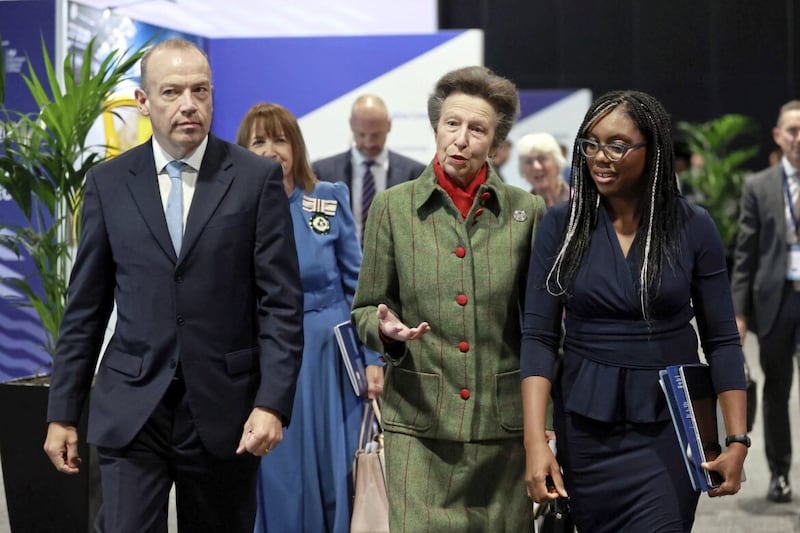IT was heartening last week to see US investment bank JP Morgan predict that 2022 will mark the end of the coronavirus pandemic and see a full global economic recovery.
That may feel far away at the moment with Omicron cases rising rapidly. But the bank's outlook report for the year ahead said new vaccines and therapeutics would result in a ‘strong cyclical recovery, a return of global mobility, and a release of pent-up demand from consumers”.
While everyone is hoping that this prediction transpires, there is obviously a degree of trepidation among businesses given the strong headwinds they currently face. When firms talk about what’s ahead in 2022, three key issues dominate – inflation, supply chains and labour shortages.
There has been much attention recently on the prospect of higher inflation on the horizon. Indeed, prices on the Consumer Price Index (CPI) measure have been rising for much of 2021 – and reached a 10-year high of 5.1 per cent in November.
Several drivers are responsible, but rising global commodity prices, supply constraints and demand surges as restrictions have been lifted have all put upward pressure on inflation. In addition, the composition of spending during the pandemic shifted significantly, with consumers spending much more on goods and less on services – a trend which has yet to fully reverse. Unfortunately, in some cases, additional demand pressure on goods is being met with supply constraints in global manufacturing, leading to a ‘double whammy’ impact on prices.
Without doubt the inflation peak has not yet been reached. A potential UK energy price cap in April 2022 could further impact prices, while global commodity prices and supply chain disruption are also expected to continue exerting upward pressure on this index in 2022.
There are also fears for the impact upon energy-intensive sectors hit by the recent spike in gas prices – both through a direct rise in costs, as well as spill-over effects. For example, in autumn this year high energy costs threatened a UK-based ammonia plant with closure. The plant however was a critical supplier of carbon dioxide to the UK’s food sector; so a government support package was needed to ensure continued production and supply of this vital ingredient – at least until January 2022.
Furthermore, many firms are also contending with higher pay settlements for specific roles where skills are in short supply (for example, HGV drivers). The labour market remains incredibly tight, with vacancies at record levels right across the UK. There are also increasing fears that disruption from Omicron will impact absenteeism levels as we head into the New Year, which would once again impact production and supply chains. Overall, Omicron’s impact on consumer demand and expenditure is also unknown and adds further uncertainty to the economic outlook.
The Bank of England does however believe that many of the inflationary pressures are temporary. It argues that global progress in tacking the pandemic should mean supply chain disruptions will ease. Demand too should settle to more normal levels and the goods/services split should rebalance in time.
But consideration must also be given to the extent to which the recent rise in inflation is becoming embedded in more underlying price pressures (particularly inflation expectations and wage bargaining). With a plethora of costs escalating for business, many firms report that higher prices will have to be passed on to customers. Indeed, households’ expectations of future inflation have been rising in the BoE’s own survey, but nonetheless remain relatively low. The bank’s best judgement at this stage is that inflation expectations remain anchored to the 2 per cent target. Let’s see!
In the months ahead the Bank of England will be keeping a close eye on inflation expectations, wages and the degree of spare capacity in the economy. Having spare capacity makes it easier to raise output without incurring higher costs. The modest interest rates rise announced on Thursday last should reassure businesses that the Bank is maintaining a watchful eye on the issue and is ready to act to tighten monetary policy when necessary.
In summary, there are some significant headwinds and uncertainties for the year ahead, but we must remember that the underlying fundamentals of growth remain firm. Looking ahead, the economy should be supported by solid household and corporate balance sheets spurring consumer spending and investment, aided further by a strong labour market.
However, other challenges will persist into the medium-term: higher inflation will eat into real earnings, business investment will require support once the government’s super-deduction ends, and exports will lag behind significantly. With productivity only returning to its anaemic pre-Covid trend and GDP seeing some scarring from the pandemic, it’s clear longer-term challenges still need to be addressed.
:: Angela McGowan is director at CBI Northern Ireland









